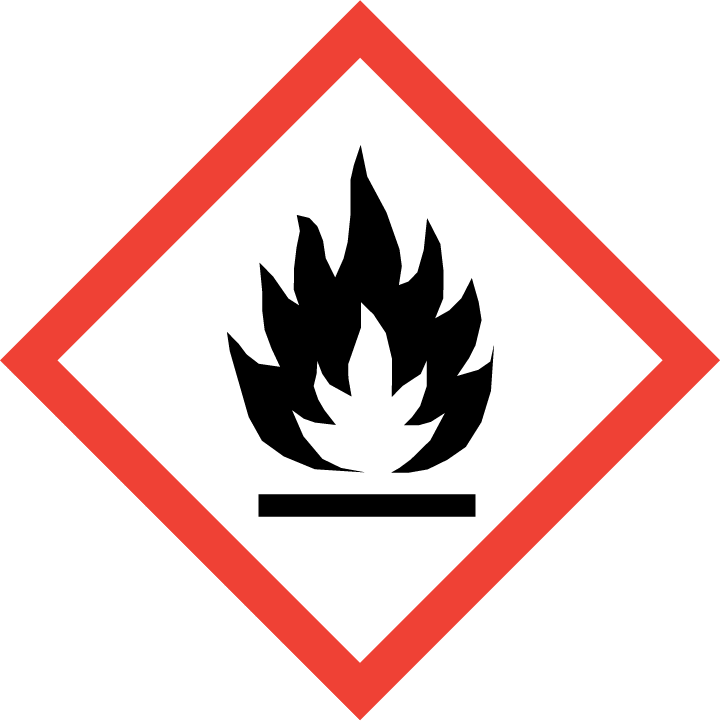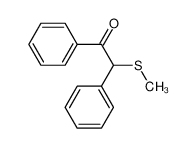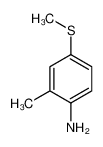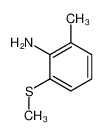| Product name | dimethyl disulfide |
|---|
| Product number | - |
|---|---|
| Other names | Methyldisulfide |
| Identified uses | For industry use only. Food additives -> Flavoring Agents |
|---|---|
| Uses advised against | no data available |
| Company | MOLBASE (Shanghai) Biotechnology Co., Ltd. |
|---|---|
| Address | Floor 4 & 5, Building 12, No. 1001 North Qinzhou Road, Xuhui District, Shanghai, China |
| Telephone | +86(21)64956998 |
| Fax | +86(21)54365166 |
| Emergency phone number | +86-400-6021-666 |
|---|---|
| Service hours | Monday to Friday, 9am-5pm (Standard time zone: UTC/GMT +8 hours). |
Flammable liquids, Category 2
Acute toxicity - Oral, Category 4
Skin sensitization, Category 1B
Eye irritation, Category 2
Acute toxicity - Inhalation, Category 3
Specific target organ toxicity – single exposure, Category 3
Hazardous to the aquatic environment, short-term (Acute) - Category Acute 1
Hazardous to the aquatic environment, long-term (Chronic) - Category Chronic 1
2.2 GHS label elements, including precautionary statements| Pictogram(s) |    |
|---|---|
| Signal word | Danger |
| Hazard statement(s) | H225 Highly flammable liquid and vapour H302 Harmful if swallowed H317 May cause an allergic skin reaction H319 Causes serious eye irritation H331 Toxic if inhaled H335 May cause respiratory irritation H410 Very toxic to aquatic life with long lasting effects |
| Precautionary statement(s) | |
| Prevention | P210 Keep away from heat, hot surfaces, sparks, open flames and other ignition sources. No smoking. P233 Keep container tightly closed. P240 Ground and bond container and receiving equipment. P241 Use explosion-proof [electrical/ventilating/lighting/...] equipment. P242 Use non-sparking tools. P243 Take action to prevent static discharges. P280 Wear protective gloves/protective clothing/eye protection/face protection. P264 Wash ... thoroughly after handling. P270 Do not eat, drink or smoke when using this product. P261 Avoid breathing dust/fume/gas/mist/vapours/spray. P272 Contaminated work clothing should not be allowed out of the workplace. P271 Use only outdoors or in a well-ventilated area. P273 Avoid release to the environment. |
| Response | P303+P361+P353 IF ON SKIN (or hair): Take off immediately all contaminated clothing. Rinse skin with water [or shower]. P370+P378 In case of fire: Use ... to extinguish. P301+P312 IF SWALLOWED: Call a POISON CENTER/doctor/…if you feel unwell. P330 Rinse mouth. P302+P352 IF ON SKIN: Wash with plenty of water/... P333+P313 If skin irritation or rash occurs: Get medical advice/attention. P321 Specific treatment (see ... on this label). P362+P364 Take off contaminated clothing and wash it before reuse. P305+P351+P338 IF IN EYES: Rinse cautiously with water for several minutes. Remove contact lenses, if present and easy to do. Continue rinsing. P337+P313 If eye irritation persists: Get medical advice/attention. P304+P340 IF INHALED: Remove person to fresh air and keep comfortable for breathing. P311 Call a POISON CENTER/doctor/… P312 Call a POISON CENTER/doctor/…if you feel unwell. P391 Collect spillage. |
| Storage | P403+P235 Store in a well-ventilated place. Keep cool. P403+P233 Store in a well-ventilated place. Keep container tightly closed. P405 Store locked up. |
| Disposal | P501 Dispose of contents/container to ... |
none
3.Composition/information on ingredients 3.1 Substances| Chemical name | Common names and synonyms | CAS number | EC number | Concentration |
|---|---|---|---|---|
| dimethyl disulfide | dimethyl disulfide | 624-92-0 | none | 100% |
Consult a physician. Show this safety data sheet to the doctor in attendance.
If inhaledFresh air, rest. Refer for medical attention.
In case of skin contactRemove contaminated clothes. Rinse and then wash skin with water and soap. Refer for medical attention .
In case of eye contactFirst rinse with plenty of water for several minutes (remove contact lenses if easily possible), then refer for medical attention.
If swallowedRinse mouth. Do NOT induce vomiting. Give nothing to drink. Refer for medical attention .
4.2 Most important symptoms/effects, acute and delayedExcerpt from ERG Guide 130 [Flammable Liquids (Water-Immiscible / Noxious)]: May cause toxic effects if inhaled or absorbed through skin. Inhalation or contact with material may irritate or burn skin and eyes. Fire will produce irritating, corrosive and/or toxic gases. Vapors may cause dizziness or suffocation. Runoff from fire control or dilution water may cause pollution. (ERG, 2016)
4.3 Indication of immediate medical attention and special treatment needed, if necessaryImmediate first aid: Ensure that adequate decontamination has been carried out. If patient is not breathing, start artificial respiration, preferably with a demand-valve resuscitator, bag-valve-mask device, or pocket mask, as trained. Perform CPR as necessary. Immediately flush contaminated eyes with gently flowing water. Do not induce vomiting. If vomiting occurs, lean patient forward or place on left side (head-down position, if possible) to maintain an open airway and prevent aspiration. Keep patient quiet and maintain normal body temperature. Obtain medical attention. /Sulfur and related compounds/
5.Fire-fighting measures 5.1 Extinguishing media Suitable extinguishing mediaExcerpt from ERG Guide 130 [Flammable Liquids (Water-Immiscible / Noxious)]: CAUTION: All these products have a very low flash point: Use of water spray when fighting fire may be inefficient. SMALL FIRE: Dry chemical, CO2, water spray or regular foam. LARGE FIRE: Water spray, fog or regular foam. Do not use straight streams. Move containers from fire area if you can do it without risk. FIRE INVOLVING TANKS OR CAR/TRAILER LOADS: Fight fire from maximum distance or use unmanned hose holders or monitor nozzles. Cool containers with flooding quantities of water until well after fire is out. Withdraw immediately in case of rising sound from venting safety devices or discoloration of tank. ALWAYS stay away from tanks engulfed in fire. For massive fire, use unmanned hose holders or monitor nozzles; if this is impossible, withdraw from area and let fire burn. (ERG, 2016)
5.2 Specific hazards arising from the chemicalExcerpt from ERG Guide 130 [Flammable Liquids (Water-Immiscible / Noxious)]: HIGHLY FLAMMABLE: Will be easily ignited by heat, sparks or flames. Vapors may form explosive mixtures with air. Vapors may travel to source of ignition and flash back. Most vapors are heavier than air. They will spread along ground and collect in low or confined areas (sewers, basements, tanks). Vapor explosion hazard indoors, outdoors or in sewers. Those substances designated with a (P) may polymerize explosively when heated or involved in a fire. Runoff to sewer may create fire or explosion hazard. Containers may explode when heated. Many liquids are lighter than water. (ERG, 2016)
5.3 Special protective actions for fire-fightersWear self-contained breathing apparatus for firefighting if necessary.
6.Accidental release measures 6.1 Personal precautions, protective equipment and emergency proceduresUse personal protective equipment. Avoid dust formation. Avoid breathing vapours, mist or gas. Ensure adequate ventilation. Evacuate personnel to safe areas. Avoid breathing dust. For personal protection see section 8.
6.2 Environmental precautionsEvacuate danger area! Consult an expert! Remove all ignition sources. Personal protection: filter respirator for organic gases and vapours adapted to the airborne concentration of the substance. Ventilation. Do NOT wash away into sewer. Do NOT let this chemical enter the environment. Collect leaking and spilled liquid in sealable containers as far as possible. Absorb liquid in sand or inert absorbent. Carefully collect remainder in sealable containers. Store and dispose of according to local regulations.
6.3 Methods and materials for containment and cleaning upPick up and arrange disposal. Sweep up and shovel. Keep in suitable, closed containers for disposal.
7.Handling and storage 7.1 Precautions for safe handlingAvoid contact with skin and eyes. Avoid formation of dust and aerosols. Avoid exposure - obtain special instructions before use.Provide appropriate exhaust ventilation at places where dust is formed. For precautions see section 2.2.
7.2 Conditions for safe storage, including any incompatibilitiesFireproof. Well closed. Separated from oxidants. Store in an area without drain or sewer access. Provision to contain effluent from fire extinguishing.
8.Exposure controls/personal protection 8.1 Control parameters Occupational Exposure limit valuesno data available
Biological limit valuesno data available
8.2 Appropriate engineering controlsHandle in accordance with good industrial hygiene and safety practice. Wash hands before breaks and at the end of workday.
8.3 Individual protection measures, such as personal protective equipment (PPE) Eye/face protectionSafety glasses with side-shields conforming to EN166. Use equipment for eye protection tested and approved under appropriate government standards such as NIOSH (US) or EN 166(EU).
Skin protectionWear impervious clothing. The type of protective equipment must be selected according to the concentration and amount of the dangerous substance at the specific workplace. Handle with gloves. Gloves must be inspected prior to use. Use proper glove removal technique(without touching glove's outer surface) to avoid skin contact with this product. Dispose of contaminated gloves after use in accordance with applicable laws and good laboratory practices. Wash and dry hands. The selected protective gloves have to satisfy the specifications of EU Directive 89/686/EEC and the standard EN 374 derived from it.
Respiratory protectionWear dust mask when handling large quantities.
Thermal hazardsno data available
9.Physical and chemical properties| Physical state | A colorless oily liquid with a garlic-like odor |
|---|---|
| Colour | Yellow liquid |
| Odour | Garlic-like |
| Melting point/ freezing point | 208°C(lit.) |
| Boiling point or initial boiling point and boiling range | 110°C |
| Flammability | Highly flammable. Gives off irritating or toxic fumes (or gases) in a fire. |
| Lower and upper explosion limit / flammability limit | no data available |
| Flash point | 7°C(lit.) |
| Auto-ignition temperature | >300°C |
| Decomposition temperature | no data available |
| pH | no data available |
| Kinematic viscosity | 0.62 mPa.sec at 20°C |
| Solubility | less than 1 mg/mL at 20°C |
| Partition coefficient n-octanol/water (log value) | log Kow = 1.77 |
| Vapour pressure | 22 mm Hg ( 20 °C) |
| Density and/or relative density | 1.0625 |
| Relative vapour density | 3.24 (vs air) |
| Particle characteristics | no data available |
no data available
10.2 Chemical stabilityStable under recommended storage conditions.
10.3 Possibility of hazardous reactionsA very dangerous fire hazard when exposed to heat, flame, or oxidizers.The vapour mixes well with air, explosive mixtures are easily formed.DIMETHYL DISULFIDE is a reducing agent. A dangerous fire hazard when exposed to oxidizing materials. Emits toxic fumes of oxides of sulfur when heated to decomposition or on contact with acids [Sax, 9th ed., 1996, p. 1320].
10.4 Conditions to avoidno data available
10.5 Incompatible materials... Can react vigorously with oxidizing materials.
10.6 Hazardous decomposition productsno data available
11.Toxicological information Acute toxicity- Oral: LD50 Rat oral more than 290 mg/kg
- Inhalation: LC50 Mice inhalation 12300 ug/cu m/2 hr
- Dermal: no data available
no data available
Serious eye damage/irritationno data available
Respiratory or skin sensitizationno data available
Germ cell mutagenicityno data available
Carcinogenicityno data available
Reproductive toxicityno data available
STOT-single exposureno data available
STOT-repeated exposureno data available
Aspiration hazardno data available
12.Ecological information 12.1 Toxicity- Toxicity to fish: LC50; Species: Brachydanio rerio (Zebra Danio); Conditions: freshwater, static renewal; Concentration: 5.01 mg/L for 96 hr
- Toxicity to daphnia and other aquatic invertebrates: LC50; Species: Daphnia magna (Water Flea) age <24 hr; Conditions: freshwater, renewal; Concentration: 1610 ug/L for 48 hr (95% confidence limit: 1310-1990 ug/L) /99.9% purity
- Toxicity to algae: EC50; Species: Anabaena flosaquae (Blue-Green Algae); Conditions: freshwater, static; Concentration: 320 ug/L for 96 hr (95% confidence limit: 110-900 ug/L); Effect: population abundance /99.6% purity
- Toxicity to microorganisms: no data available
AEROBIC: Dimethyl disulfide, present at 100 mg/L, reached 0% of its theoretical BOD in 4 weeks using an activated sludge inoculum at 30 mg/L in the Japanese MITI test(1).
12.3 Bioaccumulative potentialAn estimated BCF of 0.3 was calculated in fish for dimethyl disulfide(SRC), using a log Kow of 1.77(1) and a regression-derived equation(2). According to a classification scheme(3), this BCF suggests the potential for bioconcentration in aquatic organisms is low(SRC).
12.4 Mobility in soilUsing a structure estimation method based on molecular connectivity indices(1), the Koc of dimethyl disulfide can be estimated to be 40(SRC). According to a classification scheme(2), this estimated Koc value suggests that dimethyl disulfide is expected to have very high mobility in soil. Gas chromatographic studies with various air-dry and moist soils have shown that soil can sorb atmospheric, gas phase dimethyl disulfide(3). In one closed-system test, 17-94% of input dimethyl disulfide was sorbed by the soil in 10 min(3); in a 15-day test, dimethyl disulfide sorption was 101-306 ug sorbed/g soil(3). Soil microbes were found to be important for the gas phase sorption of dimethyl disulfide as 15-day sorption in sterilized soil was only 9-98 ug sorbed/g soil(3).
12.5 Other adverse effectsno data available
13.Disposal considerations 13.1 Disposal methods ProductThe material can be disposed of by removal to a licensed chemical destruction plant or by controlled incineration with flue gas scrubbing. Do not contaminate water, foodstuffs, feed or seed by storage or disposal. Do not discharge to sewer systems.
Contaminated packagingContainers can be triply rinsed (or equivalent) and offered for recycling or reconditioning. Alternatively, the packaging can be punctured to make it unusable for other purposes and then be disposed of in a sanitary landfill. Controlled incineration with flue gas scrubbing is possible for combustible packaging materials.
14.Transport information 14.1 UN Number| ADR/RID: UN2381 | IMDG: UN2381 | IATA: UN2381 |
| ADR/RID: DIMETHYL DISULPHIDE |
| IMDG: DIMETHYL DISULPHIDE |
| IATA: DIMETHYL DISULPHIDE |
| ADR/RID: 3 | IMDG: 3 | IATA: 3 |
| ADR/RID: II | IMDG: II | IATA: II |
| ADR/RID: yes | IMDG: yes | IATA: yes |
no data available
14.7 Transport in bulk according to Annex II of MARPOL 73/78 and the IBC Codeno data available
15.Regulatory information 15.1 Safety, health and environmental regulations specific for the product in question| Chemical name | Common names and synonyms | CAS number | EC number |
|---|---|---|---|
| dimethyl disulfide | dimethyl disulfide | 624-92-0 | none |
| European Inventory of Existing Commercial Chemical Substances (EINECS) | Listed. | ||
| EC Inventory | Listed. | ||
| United States Toxic Substances Control Act (TSCA) Inventory | Listed. | ||
| China Catalog of Hazardous chemicals 2015 | Listed. | ||
| New Zealand Inventory of Chemicals (NZIoC) | Listed. | ||
| Philippines Inventory of Chemicals and Chemical Substances (PICCS) | Listed. | ||
| Vietnam National Chemical Inventory | Listed. | ||
| Chinese Chemical Inventory of Existing Chemical Substances (China IECSC) | Listed. | ||
| Creation Date | Aug 12, 2017 |
|---|---|
| Revision Date | Aug 12, 2017 |
- CAS: Chemical Abstracts Service
- ADR: European Agreement concerning the International Carriage of Dangerous Goods by Road
- RID: Regulation concerning the International Carriage of Dangerous Goods by Rail
- IMDG: International Maritime Dangerous Goods
- IATA: International Air Transportation Association
- TWA: Time Weighted Average
- STEL: Short term exposure limit
- LC50: Lethal Concentration 50%
- LD50: Lethal Dose 50%
- EC50: Effective Concentration 50%
- IPCS - The International Chemical Safety Cards (ICSC), website: http://www.ilo.org/dyn/icsc/showcard.home
- HSDB - Hazardous Substances Data Bank, website: https://toxnet.nlm.nih.gov/newtoxnet/hsdb.htm
- IARC - International Agency for Research on Cancer, website: http://www.iarc.fr/
- eChemPortal - The Global Portal to Information on Chemical Substances by OECD, website: http://www.echemportal.org/echemportal/index?pageID=0&request_locale=en
- CAMEO Chemicals, website: http://cameochemicals.noaa.gov/search/simple
- ChemIDplus, website: http://chem.sis.nlm.nih.gov/chemidplus/chemidlite.jsp
- ERG - Emergency Response Guidebook by U.S. Department of Transportation, website: http://www.phmsa.dot.gov/hazmat/library/erg
- Germany GESTIS-database on hazard substance, website: http://www.dguv.de/ifa/gestis/gestis-stoffdatenbank/index-2.jsp
- ECHA - European Chemicals Agency, website: https://echa.europa.eu/


































